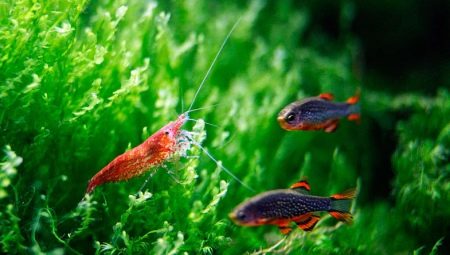Shrimp often become residents of aquariums with novice owners. The inhabitants of freshwater reservoirs are quite unpretentious. It’s easy to care for them, as well as to feed them. If the shrimp will be with fish, then it is worth paying special attention to their choice. Some neighbors can simply kill the little inhabitants.
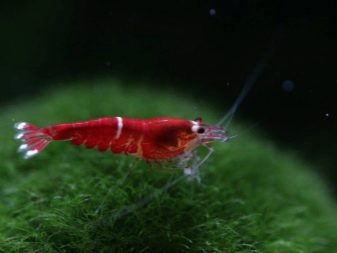
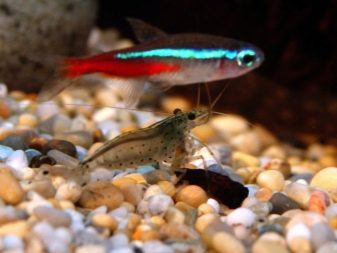
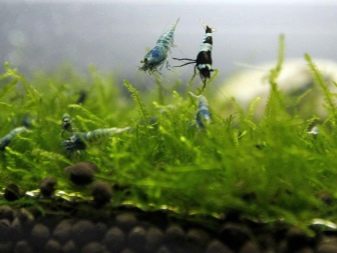
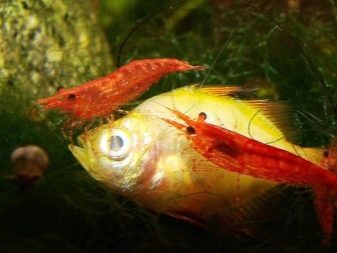
Shrimp Character Features
Healthy crustaceans lead a fairly active lifestyle. Shrimp are constantly on the move. Usually they move along plants or soil, but they swim quite rarely. Group swimming is possible only during the period of active breeding.
When adding fresh water to the aquarium, activity grows significantly. For shrimp, this phenomenon is directly associated with rain. Even if krill are rushing about for several days in the water column, do not worry. They just enjoy the new atmosphere. Everything is so rosy if the aquarium belongs only to shrimp.
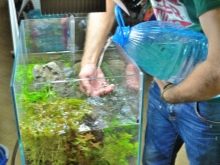
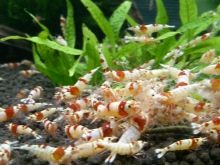

If there are fish neighbors, then it is worthwhile to closely monitor the situation, because many perceive shrimp as food. Large specimens of arthropods are quite voracious, which leads to contamination of the aquarium. The appearance of a large number of algae and disturbance of the ecosystem can become the causes of morbidity among fish. Sometimes the behavior of shrimp in the aquarium can be quite aggressive. They are jealous of their territory and can get rid of competitors.

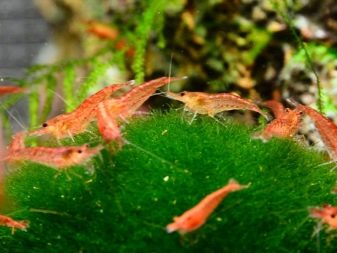
Compatibility Factors
Shrimp can get along with other living things in the same aquarium, but only if all the right conditions are created. And it’s worth it to correctly select the neighbors. However, everything is interconnected. Compatibility is affected by many nuances.
- The dimensions of krill and fish should be approximately the same. Otherwise, the former will be quickly eaten by the latter.
- Young growth needs to be planted anyway. Even if the fish calmly relate to adult shrimp, they will try to eat small ones.
- Creating a complex landscape is the key to success. Arthropods should be able to stay in the shade. Stones, plants, corals, grottoes and soil will provide good shelter.
- It is important to feed all the inhabitants of the aquarium on time. Malnutrition will lead to fights.
- The size of the vessel must be suitable.. Overpopulation can lead to increased aggression of all residents.
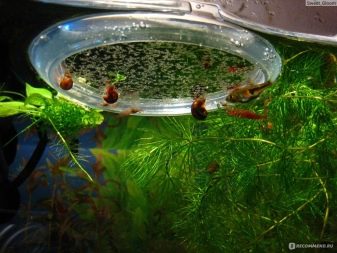
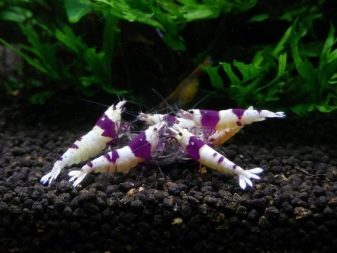
Even if a small shrimp can escape from the attacking fish, it will experience severe stress, which will still lead to death. But representatives of Macrobrachium pose a danger to their neighbors. This species grows up to 30 cm and eats all small fish, and large - cripples. The issue of compatibility must be approached thoughtfully.
When creating a mixed aquarium, it is much more correct to select shrimps for fish, but not vice versa. At first it’s worth not to flock a flock, but several individuals. The owner should observe the behavior of the neighbors. The gradual shading of crustaceans in the aquarium helps residents adapt to each other.
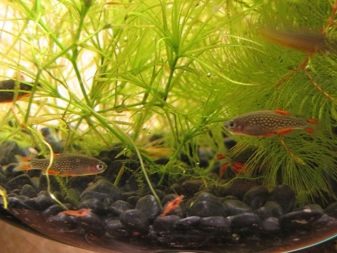
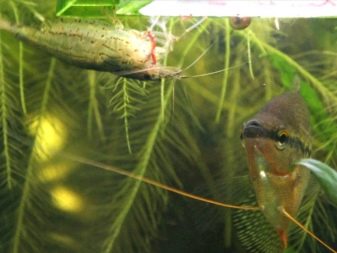
What kind of fish do you get along with?
It is almost impossible to clearly predict a favorable outcome of the neighborhood. A universal compatibility table simply does not exist, everything is based on the experience of the owners. Shrimp get along best with fish cleaners. Somiki and all kinds of algae eaters will become good companions for crustaceans.
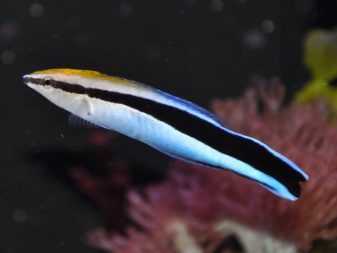

Ampouleurs and crustaceans from different worlds, and therefore get along well. In a large aquarium, they can live and not suspect of each other. Snails breed quickly, but shrimp can control this process by eating fry. Balance will be maintained even without human intervention.
Shrimp can be settled in the same aquarium with neons. Species such as acantophthalmus and corridor are compatible with arthropods, provided the landscape is correct. Crustaceans look good along with red, black and blue guppies. Keeping residents together will be easy due to their unpretentiousness and friendliness. Neighbors in the face of peace-loving parototsinklusy, micro-specials and neon irises are also very welcome.
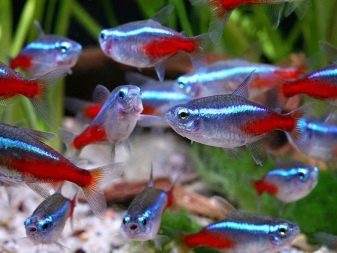
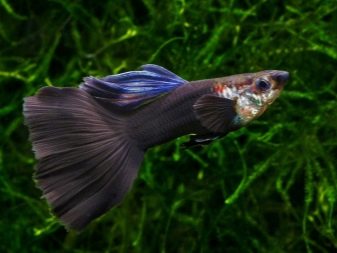
With whom is cohabitation possible, but not very desirable?
It is important to carefully choose the type of shrimp. In some cases, it is she who can pose a threat to neighbors, and not vice versa. Blue shrimp cannot be kept in the same aquarium as other crustacean species. True, this is not due to aggressiveness, but to incest. Bright arthropods will quickly lose their feature due to crossbreeding with simpler species.
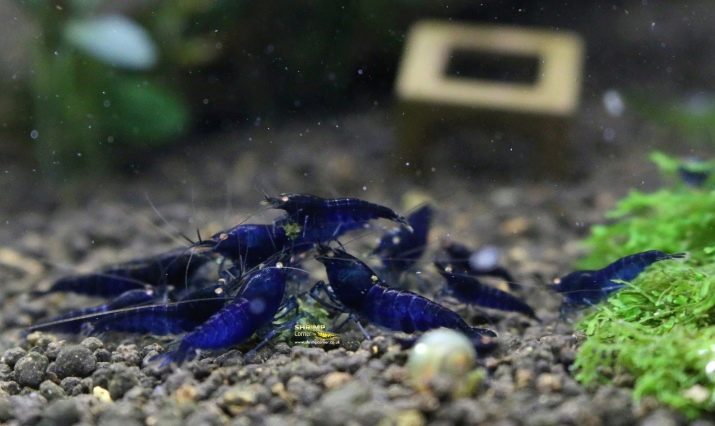
It’s not worth keeping crayfish and shrimp in one aquarium, especially if the latter are large species. It is important to provide a large number of shelters and regular food. Otherwise, the neighbors will quickly become enemies. Crayfish usually attack, but other situations also happen.
Even good large fish is not recommended to start. Shrimp will begin to lead a rather secretive lifestyle and will constantly experience fear. Maintaining a nocturnal lifestyle will lead to the dimming of the shell, arthropods will lose their attractiveness. Fish necessarily enjoy their neighbors if they are placed in their mouths. It just may not happen immediately, but on the day when the owner does not give food on time.
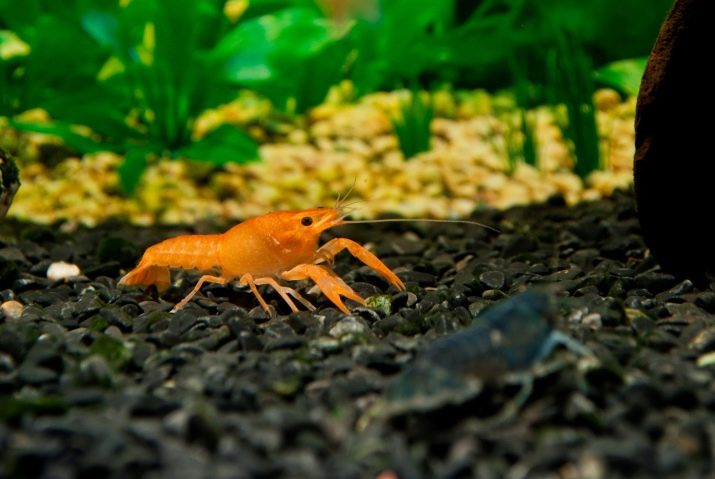
If you still want to settle with unwanted neighbors, then you should put moss in the aquarium. There shrimp will be able to hide and gradually cease to be afraid of residents.Do not settle babies with aggressive varieties of catfish. It is not recommended to combine arthropods with such fish:
- cichlids;
- scalaria;
- barbs
- char;
- gourami.
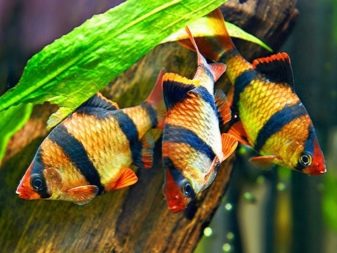
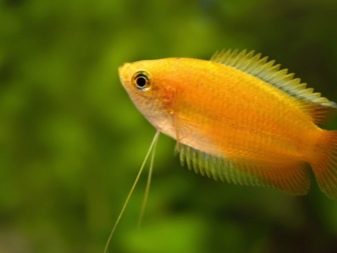
With whom is collaborative content contraindicated?
Many fish species are neutral to shrimp and simply do not notice them if there is enough food. However, there are others who are ready to attack when the habitat changes from hunger or just like that, effortlessly. It is important to ensure that the water temperature does not rise in the aquarium. During the reproduction period, it is recommended to settle the inhabitants in different vessels.
It is rather dangerous to settle crustaceans with swordsmen and other viviparous species. Such neighbors today may treat the kids neutrally, and tomorrow begin brutal and targeted extermination. Large fish, such as pecilia, rhodostomus, brochis, can be regarded as potential food to their neighbors. It is dangerous to combine shrimp with barbs, girinoheylus and cardinals in one aquarium.
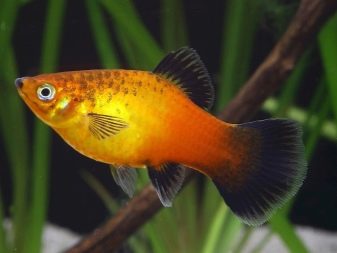
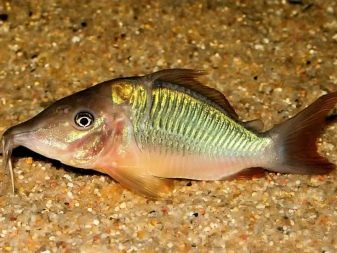
There are examples when arthropods and males coexisted in the same territory. However, experts do not approve of such a neighborhood, it can literally end in a day with the complete destruction of the kids. Aggressive predators simply cannot get along with shrimp. In this case, the fish perceive the neighbors exclusively as victims.
The death of crustaceans in the first hours ends with a settlement on the same territory with gourai, goldfish, an apistogram of Ramirezi, pelvikahromis. Sometimes it happens that predatory fish do not attack shrimp flocks, but catch them one by one. Some large arthropod species may attempt to defend themselves. However, in most cases, peaceful living in such a mixed aquarium cannot be achieved.
Macropods and shrimp cannot live together. Filtrators will suffer from fish attacks. Especially dangerous things are when throwing off the shell. During molting, crustaceans are too vulnerable and become easy prey. If you choose larger crustaceans, then the danger threatens the fish, its small size makes them potential victims.
For information on which fish shrimp get along with, see the video below.
